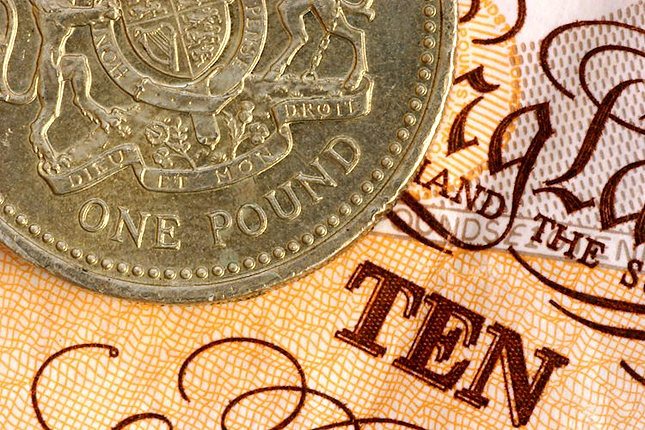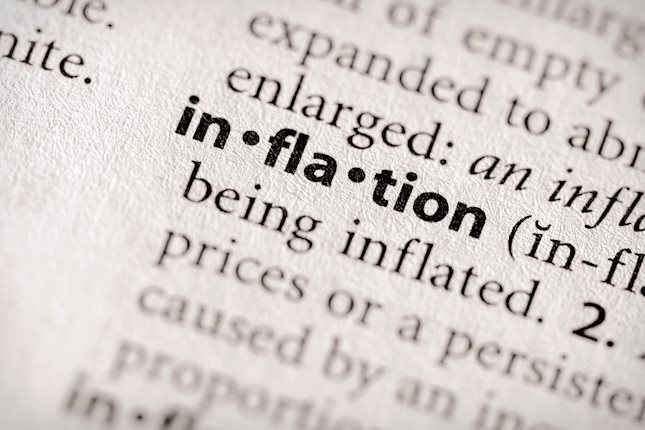- EUR/USD trades in a narrow channel following Tuesday's indecisive action.
- The US economic calendar will feature several high-impact data releases.
- The pair could extend its recovery once it clears 1.0520 resistance.
EUR/USD failed to make a decisive move in either direction on Tuesday and closed the day virtually unchanged slightly below 1.0500. The pair moves sideways in a narrow channel early Wednesday as investors await macroeconomic data releases from the US.
Euro PRICE This week
The table below shows the percentage change of Euro (EUR) against listed major currencies this week. Euro was the strongest against the Australian Dollar.
| USD | EUR | GBP | JPY | CAD | AUD | NZD | CHF | |
|---|---|---|---|---|---|---|---|---|
| USD | -0.77% | -0.47% | -1.40% | 0.72% | 0.25% | -0.42% | -0.81% | |
| EUR | 0.77% | 0.13% | -1.23% | 0.89% | 0.95% | -0.23% | -0.62% | |
| GBP | 0.47% | -0.13% | -1.34% | 0.76% | 0.81% | -0.36% | -0.76% | |
| JPY | 1.40% | 1.23% | 1.34% | 2.15% | 2.10% | 1.05% | 0.78% | |
| CAD | -0.72% | -0.89% | -0.76% | -2.15% | -0.32% | -1.11% | -1.54% | |
| AUD | -0.25% | -0.95% | -0.81% | -2.10% | 0.32% | -1.16% | -1.55% | |
| NZD | 0.42% | 0.23% | 0.36% | -1.05% | 1.11% | 1.16% | -0.40% | |
| CHF | 0.81% | 0.62% | 0.76% | -0.78% | 1.54% | 1.55% | 0.40% |
The heat map shows percentage changes of major currencies against each other. The base currency is picked from the left column, while the quote currency is picked from the top row. For example, if you pick the Euro from the left column and move along the horizontal line to the US Dollar, the percentage change displayed in the box will represent EUR (base)/USD (quote).
After dipping below 1.0450 on Tuesday, EUR/USD recovered its losses in the American session as the mixed data from the US and the modest improvement seen in risk mood made it difficult for the US Dollar (USD) to find demand.
Later in the day, the US Bureau of Economic Analysis will publish its second estimate of the annualized Gross Domestic Product (GDP) growth for the third quarter and release the Personal Consumption Expenditures (PCE) Price Index data, the Federal Reserve's (Fed) preferred gauge of inflation, for October.
Investors expect the core PCE Price Index to rise 0.3% on a monthly basis to match September's increase. A reading at or above the market expectation could support the USD with the immediate reaction. On the other hand, a print below analysts' estimate could weigh on the USD and help EUR/USD push higher.
Ahead of the Thanksgiving holiday, the US economic calendar will feature other important data releases as well, making it difficult for market participants to assess the impact of these data on the USD's valuation. The US Department of Labor will publish the weekly Initial Jobless Claims alongside the US Census Bureau's Durable Goods Orders figures for October.
EUR/USD Technical Analysis
EUR/USD faces first resistance at 1.0520, where the upper limit of the descending regression channel meets the 50-period Simple Moving Average (SMA). In case the pair rises above this level and starts using it as support, 1.0570 (static level) could be seen as next hurdle before 1.0600 (100-period SMA).
On the downside, immediate support is located at 1.0480 (20-period SMA) ahead of 1.0430 (mid-point of the descending channel) and 1.0400 (static level).
Euro FAQs
The Euro is the currency for the 19 European Union countries that belong to the Eurozone. It is the second most heavily traded currency in the world behind the US Dollar. In 2022, it accounted for 31% of all foreign exchange transactions, with an average daily turnover of over $2.2 trillion a day. EUR/USD is the most heavily traded currency pair in the world, accounting for an estimated 30% off all transactions, followed by EUR/JPY (4%), EUR/GBP (3%) and EUR/AUD (2%).
The European Central Bank (ECB) in Frankfurt, Germany, is the reserve bank for the Eurozone. The ECB sets interest rates and manages monetary policy. The ECB’s primary mandate is to maintain price stability, which means either controlling inflation or stimulating growth. Its primary tool is the raising or lowering of interest rates. Relatively high interest rates – or the expectation of higher rates – will usually benefit the Euro and vice versa. The ECB Governing Council makes monetary policy decisions at meetings held eight times a year. Decisions are made by heads of the Eurozone national banks and six permanent members, including the President of the ECB, Christine Lagarde.
Eurozone inflation data, measured by the Harmonized Index of Consumer Prices (HICP), is an important econometric for the Euro. If inflation rises more than expected, especially if above the ECB’s 2% target, it obliges the ECB to raise interest rates to bring it back under control. Relatively high interest rates compared to its counterparts will usually benefit the Euro, as it makes the region more attractive as a place for global investors to park their money.
Data releases gauge the health of the economy and can impact on the Euro. Indicators such as GDP, Manufacturing and Services PMIs, employment, and consumer sentiment surveys can all influence the direction of the single currency. A strong economy is good for the Euro. Not only does it attract more foreign investment but it may encourage the ECB to put up interest rates, which will directly strengthen the Euro. Otherwise, if economic data is weak, the Euro is likely to fall. Economic data for the four largest economies in the euro area (Germany, France, Italy and Spain) are especially significant, as they account for 75% of the Eurozone’s economy.
Another significant data release for the Euro is the Trade Balance. This indicator measures the difference between what a country earns from its exports and what it spends on imports over a given period. If a country produces highly sought after exports then its currency will gain in value purely from the extra demand created from foreign buyers seeking to purchase these goods. Therefore, a positive net Trade Balance strengthens a currency and vice versa for a negative balance.
Information on these pages contains forward-looking statements that involve risks and uncertainties. Markets and instruments profiled on this page are for informational purposes only and should not in any way come across as a recommendation to buy or sell in these assets. You should do your own thorough research before making any investment decisions. FXStreet does not in any way guarantee that this information is free from mistakes, errors, or material misstatements. It also does not guarantee that this information is of a timely nature. Investing in Open Markets involves a great deal of risk, including the loss of all or a portion of your investment, as well as emotional distress. All risks, losses and costs associated with investing, including total loss of principal, are your responsibility. The views and opinions expressed in this article are those of the authors and do not necessarily reflect the official policy or position of FXStreet nor its advertisers. The author will not be held responsible for information that is found at the end of links posted on this page.
If not otherwise explicitly mentioned in the body of the article, at the time of writing, the author has no position in any stock mentioned in this article and no business relationship with any company mentioned. The author has not received compensation for writing this article, other than from FXStreet.
FXStreet and the author do not provide personalized recommendations. The author makes no representations as to the accuracy, completeness, or suitability of this information. FXStreet and the author will not be liable for any errors, omissions or any losses, injuries or damages arising from this information and its display or use. Errors and omissions excepted.
The author and FXStreet are not registered investment advisors and nothing in this article is intended to be investment advice.
Recommended Content
Editors’ Picks

EUR/USD regains 1.0500 and beyond as US Dollar wilts ahead of data
EUR/USD is extending the rebound above 1.0500 in the European session on Wednesday. Traders cash in on the US Dollar long positions ahead of a series if top-tier US data, lifting the pair. The USD/JPY sell-off also adds to the US Dollar downside.

GBP/USD holds gains near 1.2600, US PCE data eyed
GBP/USD extends the bullish momentum to trade near 1.2600 in European trading on Wednesday. The pair remains underpinned by a sustained US Dollar weakness and risk-off sentiment as traders turn cautious ahead of top-tier US data releases.

Gold price climbs above $2,650 on trade war concerns, sliding US bond yields and softer USD
Gold price sticks to modest intraday gains near a two-day high, above the $2,650 level, through the first half of the European session as geopolitical risks and US President-elect Donald Trump's tariff plans drive haven flows for the second straight day.

US core PCE inflation set to hold steady, raising doubts on further Federal Reserve rate cut
The United States Bureau of Economic Analysis (BEA) is set to release the Personal Consumption Expenditures (PCE) Price Index data for October on Wednesday at 15:00 GMT.

Eurozone PMI sounds the alarm about growth once more
The composite PMI dropped from 50 to 48.1, once more stressing growth concerns for the eurozone. Hard data has actually come in better than expected recently – so ahead of the December meeting, the ECB has to figure out whether this is the PMI crying wolf or whether it should take this signal seriously. We think it’s the latter.

Best Forex Brokers with Low Spreads
VERIFIED Low spreads are crucial for reducing trading costs. Explore top Forex brokers offering competitive spreads and high leverage. Compare options for EUR/USD, GBP/USD, USD/JPY, and Gold.
